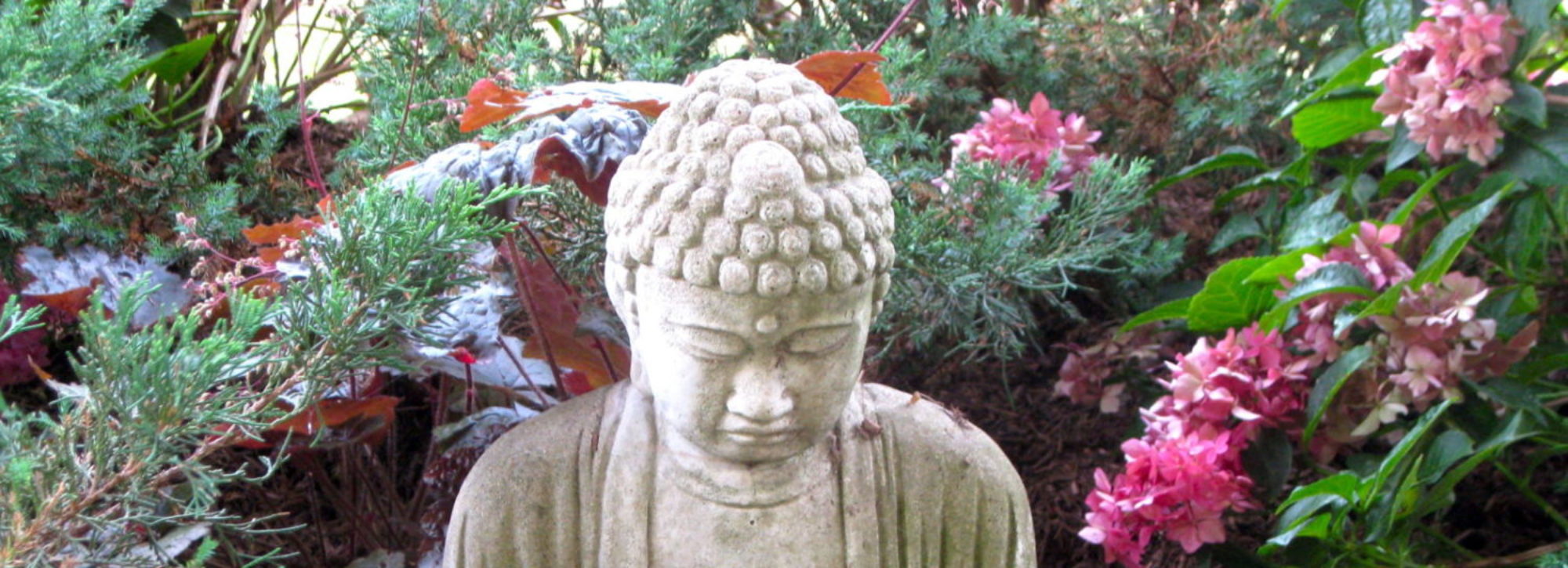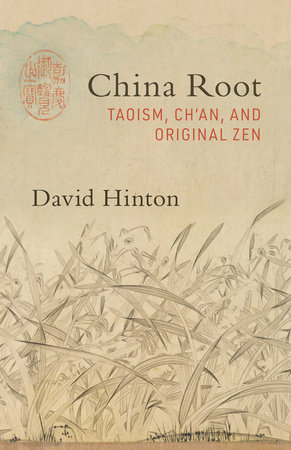In China Root: Taoism, Ch’an, and Original Zen (Shambhala, 2020), translator/poet David Hinton makes two closely related arguments. The first, his strongest argument, is that English translations of Chán texts obscure, distort, and erase Chán’s significant debt to Daoist thought. The second, and somewhat weaker argument, is that Chán is an offshoot of Daoism that incorporated and subsequently remade Buddhist meditation in its own image, rather than being an authentic form of Buddhism in its own right. There can be no doubt that as Buddhism established itself in East Asia it underwent a significant process of Sinicization as it was 1) initially understood through the lens of Daoism, and then, 2) as it was understood more thoroughly as the vast corpus of Buddhist literature was gradually translated into Chinese. There can be no doubt that the authors of the great works of Chán literature—e.g., the Transmission of the Lamp, the Platform Sūtra, and the kōan collections—were at least as well-versed in Laozi, Zhuangzi, Kongzi, and Mengzi as they were in the Buddha, Nāgārjuna, Asaṅga, and Vasubandhu. The way that Chán practitioners and thinkers negotiated the mutual assimilation and accommodation of Buddhist to Daoist ideas with their simultaneous multiple similarities and incompatibilities is an endlessly fascinating topic. A good deal of Hinton’s argument is philological. In other words, because the Chinese borrowed already existing Chinese characters from the Daoist lexicon to translate novel Sanskrit words, these words continued to mean what they meant for Daoists—no more, no less—even after centuries of use in their new Buddhist context. Hinton may very well be right, but it is also possible that the words developed new and slightly different meanings in their new context even as they continued to retain the penumbra of some of their older connotations. I suspect this is an issue scholars can (and will) debate endlessly without coming to a final universally agreed upon conclusion.
Having stated this reservation up front, let me say that Hinton presents a fascinating account of how English translations of the Chán literature really do a significant disservice to Chán’s Daoist heritage. He shows how certain characters that have clear Daoist meanings are simply left omitted, untranslated, or mistranslated in well-known English translations—for example, the characters “玄” (xuán) meaning “dark enigma” and 文 (wén) meaning “inner pattern,” referring respectively to the ungraspable nature of the Dao and its intricate inner pattern. Hinton also shows how words that have important double meanings are translated as if they only have one meaning. For example, the Chinese character 無 (wú, Chinese; mu, Japanese) is usually translated simply as “no” or “not” as in the kōan of Zhaozhou’s dog, or in the long list of negations in the Heart Sutra. Hinton claims that 無 is also the character for the Daoist principle of “absence.” The movement of the Dao is a continuous movement from absence to presence and back again to absence. Absence is thus the fertile void from which the 10,000 things manifest and return, and parallels, in some respects, the Buddhist idea of śūnyatā (emptiness) in its implications of non-dual wholeness. Thus, when Zhāozhōu says “wú” in answer to the question of whether a dog has Buddha nature, he is not merely denying it, but also pointing to the Dao and its undivided wholeness. In fact, Hinton points out there is a bit of a pun in the original Chinese version of this kōan, because the character 無 occurs twice, first as a particle at the end of the student’s question expressing negation (“A dog has a Buddha-nature, no?” and then as Zhāozhōu’s complete answer, this time as an affirmation of the principle of absence. This double role of 無 as both a negation and as the principal of absence can also be seen in the Chán concept of “no mind” which could be understood as a mind without thoughts, but also as “absence mind,” an awareness of the undivided constantly emerging wholeness of reality, of which mind is just one more emergent phenomenon.
From here, Hinton goes on to view the quintessential Chán practices of sitting meditation and kōan practice from the perspective of the Daoist concept of wúwéi (無為, non-action or “absence action”). The effortful one-pointed meditation that is so common in early Buddhist practices is thereby replaced by an effortless open attention to the constant arising of presence from absence and the undividedness of being. Solving kōans becomes a performative act in which solutions arise not from thinking, but from the spontaneous action of the universe as if manifests in individual thought and action. Meditation and kōan practice become the practice of oneness with all things here and now, and a way of experiencing/expressing wholeness rather than a means of attaining a transcendent nirvāṇa. When Chán speaks of “seeing one’s original nature,” (見性; jiànxìng, Chinese; kenshō, Japanese) it means discovering one’s already and always present oneness with the Dao. For Hinton, there is no distinction between “Buddha-nature” and this constant emergence of presence from absence and back again. Hinton also addresses the influence of Chinese mountains-and-rivers landscape painting on the Chán sensibility, and how “mountains-and-rivers” are manifestations of the Dao in the same way that the emergence of thoughts and feelings are—inner and outer landscapes that reflect a single unitary process.
All of this is certainly there in Chán, but much is also left out in Hinton’s analysis. For example, Hinton’s analysis leaves out any mention of the bodhisattva vows, the precepts, karma, the four noble truths, the paramitas and brahmaviharas, dependent origination, and so much more. The Lamp transmission stories and kōan collections highlight Chán’s Daoist-inflected antinomian side, but fail to reflect the Chán masters deep grounding in the broader Buddhist and Confucian traditions—traditions they and their students could take for granted. Theirs was a special transmission beyond letters and words, but that transmission didn’t obviate the need for developing discerning wisdom, character, and compassion. We see this clearly, for example, in the Japanese Zen of Dōgen who repeatedly said that all one had to do was sit zazen—forget everything else—but who then also went on to prescribe in detail how to read sutras, burn incense, bow, wear one’s robe, make repentance, chant, prepare meals, and wash one’s face.
This is the place to note some quibbles I have with some of Hinton’s editing decisions. First, he transliterates Chinese names using the Wade-Giles system rather than the Pinyin system most contemporary scholars use. Second, he refers to Chán masters by the English meaning of the Chinese characters that compose their names, rather than by their Chinese or Japanese transliterations. For example, he refers to Zhāozhōu as “Master Visitation Land,” and Linjī as “Master Purport Dark Enigma.” This is all right as long as you have the Chinese/Japanese transliteration equivalents in a footnote or appendix so the reader can line up their names with the names he/she is already familiar with, but it’s just plain annoying without them. My final quibble is the absence of footnotes to document research supporting claims he makes about Chinese and Chán history. Without them, it is impossible to know what scholarship he is basing those claims on. For example, Hinton asserts that the separation of self from Nature resulted from the disruptions to paleolithic culture caused by the development of agriculture and written language, and by an accompanying shift from a gynocentric to androcentric world-view. That sounds good. For all I know, it may be completely true, but I would love to know how he knows this, and whether it is supported by scholarly research. This problem is compounded by the fact that there are no scholarly references in the works cited section at the end of the book.
Despite these reservations, I strongly recommend this book. I found it interesting, stimulating, and enjoyable, and I learned quite a bit that was new to me about the history and meaning of the Chinese characters used to express Chán ideas. The book helped me to more deeply appreciate the Daoist contributions to modern Zen practice, and better understand the reasons for some of the underlying discontinuities between Zen teachings and those of other Buddhist schools. The book is written at a level the average Zen practitioner will be able to read, understand, and enjoy. My main complaint is that I wish Hinton’s approach had been more scholarly—as a non-scholar who is not fluent in classical Chinese, I was not always sure how fully I could trust Hinton’s interpretations, and alternative translations. When one is writing a book, there is always a tradeoff between making the book accessible to the average reader, but also useful for scholarly types. There is never a perfect way to do this, but I wish Hinton had erred on the more scholarly side. I also suspect his is a somewhat one-sided account of how the mating of Daoism and Buddhism produced the love child that came to be known as Zen, as it emphasizes the Daoist side of this lineage while underplaying the contributions of its Buddhist partner.

